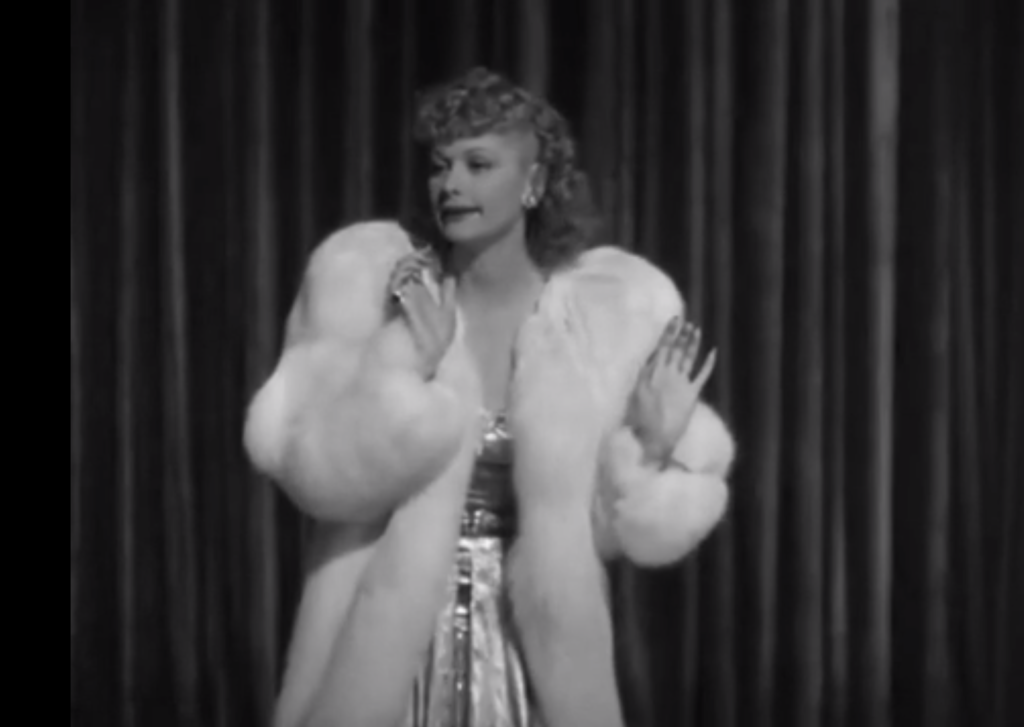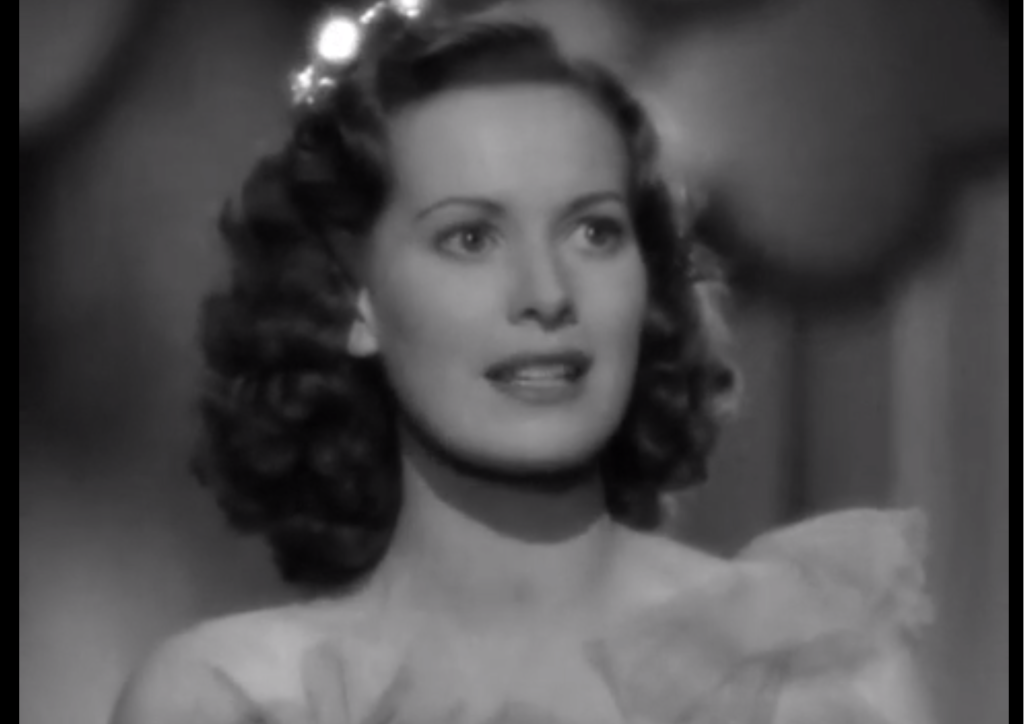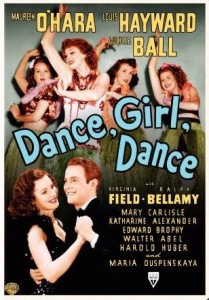|
Genres, Themes, Actors, and Directors:
- Aspiring Stars
- Dancers
- Dorothy Arzner Films
- Feminism and Women’s Issues
- Louis Hayward Films
- Lucille Ball Films
- Maureen O’Hara Films
- Musicals
- Ralph Bellamy Films
- Romance
Response to Peary’s Review:
As Peary notes, this “fascinating” early feminist film — in addition to being an enjoyable “backstage musical” — is noteworthy for being helmed by Dorothy Arzner, virtually the only female director in Hollywood during the thirties and forties. The story remains true to Arzner’s feminist loyalties: while men are clearly the ones with the most power here, the females in the film do what they can to look out for each other and follow their dreams. They are “intelligent, witty, courageous, resilient, self-motivated, self-reliant, honorable, and ambitious” — and, most unusually for the time, are willing to put career first, over romance. Dance, Girl, Dance is also notable for giving Lucille Ball one of her best early roles.
Redeeming Qualities:
- Lucille Ball as Bubbles

- Maria Ouspenskaya as Madame Basilova

- O’Hara’s fiery speech to the men in the burlesque audience

Must See?
Yes, as Arzner’s best film, and for the memorable performances by both O’Hara and Ball. Discussed at length in Peary’s Cult Movies (1981).
Categories
- Important Director
- Noteworthy Performance(s)
(Listed in 1001 Movies You Must See Before You Die)
Links:
|




One thought on “Dance, Girl, Dance (1940)”
A must.
This film has a deceptive little screenplay: it seems slight but isn’t; it sometimes seems schizophrenic – going off in two directions, but it isn’t. You just have to wait for the full effect, and it’s worth the wait. Of course, along the way, Arzner’s direction is confident and stylish, so you’re never really off the track. It’s an enjoyable ride throughout. (Arzner’s gay sensibility is also subtly on view.)
One has to suspend slight disbelief occasionally: O’Hara pleading for herself and *all* of her friends to be hired as dancers, just because they work hard and have had bad luck (did that ever fly in New York?); Ball would not be running a hit show month after month with just the same two routines (or so it seems); would O’Hara really carry that stuffed animal around with her from place to place the way she does? But…with a film as entertaining as this, you just have to pay no attention to a few quibbles.
The cast is uniformly fine but, essentially, the film belongs to O’Hara and Ball. Both characters are stubborn but each handles that differently. Ball – basically being the selfish bitch – has the flashier role. She does a mean and sexy hula dance (note the butt slaps – whoa, mama!) and her stage routine will remind you of Gypsy Rose Lee. O’Hara gets to be more thoughtful much of the time, but she simmers…as much as a feisty Irish temperament can until…
All told, a good show.
Fun bit: in the night court scene near film’s end, O’Hara & Ball’s case is followed by one for a black couple named Abraham Lincoln Johnson and Martha Washington Johnson. (?!!)